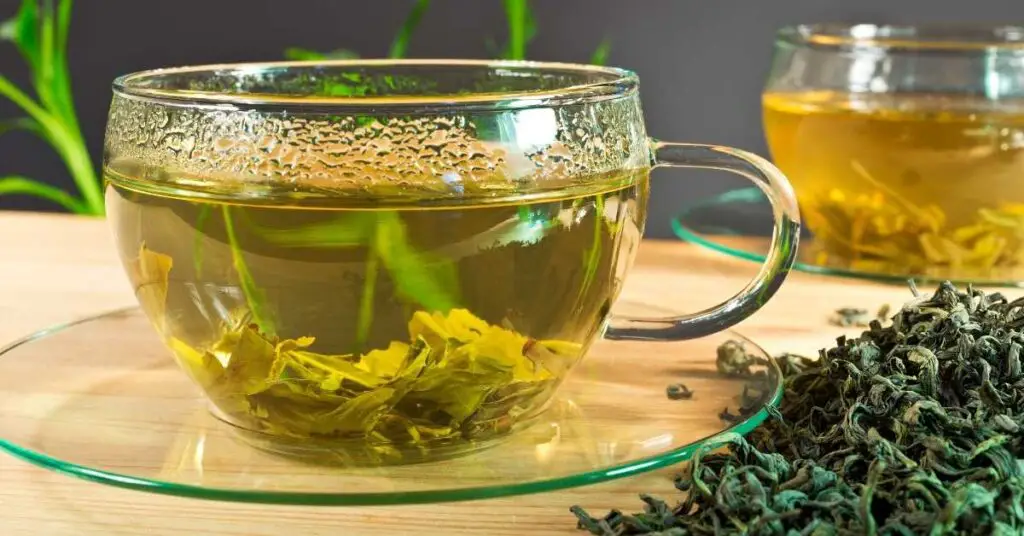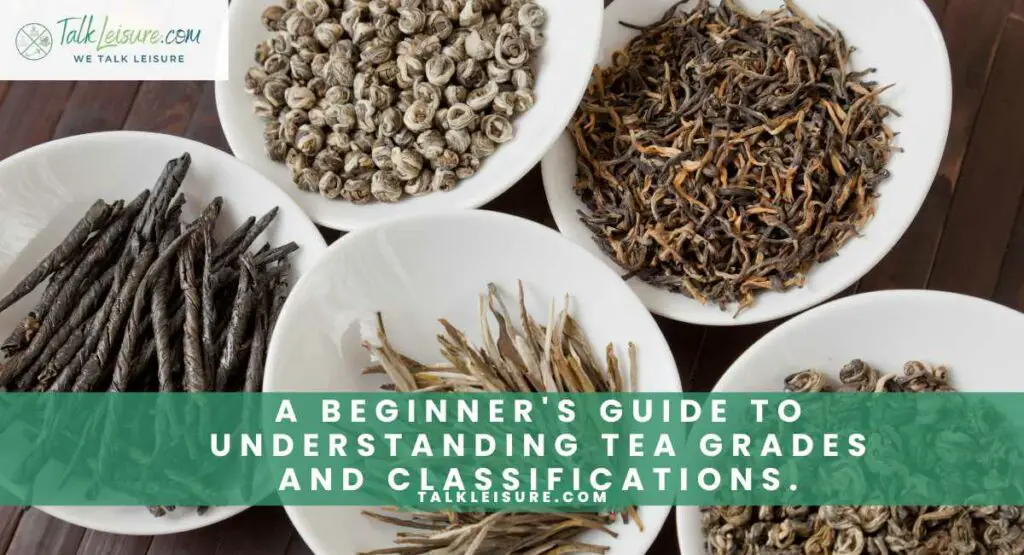Embark on a sensory voyage through the distinct tea cultures of Russia, Turkey, and the Middle East. In each of these vibrant regions, tea isn’t just a drink; it’s a cherished tradition, a symbol of hospitality, and a thread that weaves through daily life.
From the ornate samovars of Russia to the lively tea gardens of Turkey and the fragrant gatherings of the Middle East, every sip tells a story. Join us as we uncover the artful ceremonies, the diverse tea varieties, and the culinary alchemy that make these cultures a tapestry of tea experiences.
Let’s dive into a world where every cup is an invitation to connect, celebrate, and savor the moment.
Also read: The surprising ways tea has influenced major historical events.
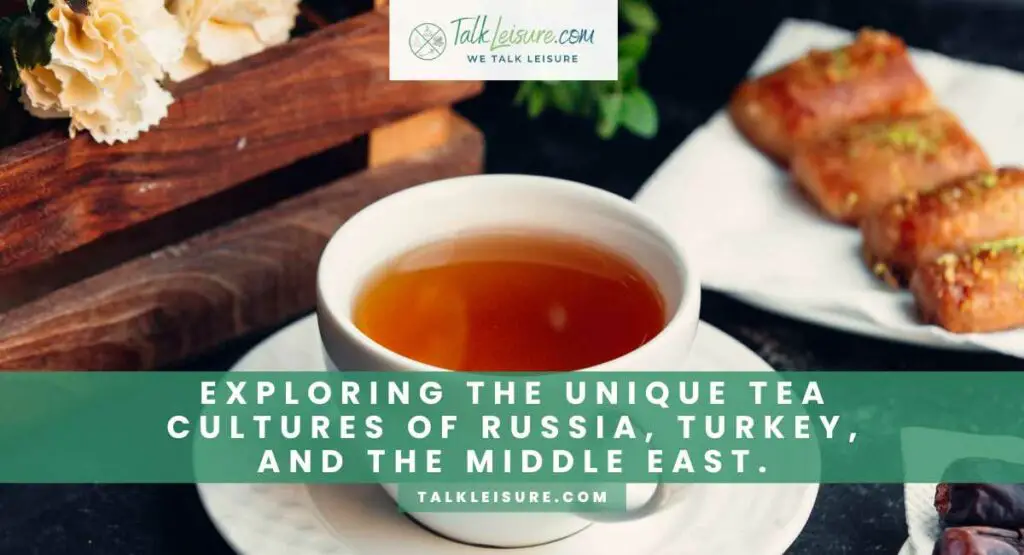
Introduction to Tea Culture
Hey there, fellow tea enthusiasts! Today, we’re embarking on a delightful journey through the enchanting world of tea culture, specifically focusing on the unique traditions of Russia, Turkey, and the Middle East. Trust me, this is going to be a sip-worthy adventure you won’t want to miss!
A Steaming Journey Through Time
Tea, oh glorious tea, has a history as rich and varied as its countless flavors. Picture this: lush mountainsides, ancient trade routes, and bustling marketplaces. It was in these evocative settings that tea leaves first found their way into the cups of eager sippers.
From its mythical origins in ancient China to its triumphant spread across continents, tea has woven itself into the fabric of cultures worldwide. But it’s the peculiarities, the little nuances that each region adds to this age-old ritual, that truly make this exploration worthwhile.
Tea: More Than a Beverage
In Russia, Turkey, and the Middle East, tea is not just a drink; it’s a ceremony, a gesture of warmth, and an invitation to share stories. It’s the cornerstone of hospitality—a common thread that binds families and friends together.
Picture yourself in a cozy Russian dacha, nestled in the heart of the countryside. The samovar, a gleaming centerpiece, emits a comforting warmth. Or perhaps you find yourself in a bustling Turkish tea garden, where the air is alive with the clinking of glasses and animated conversations. And in the Middle East, where fragrant blends steeped in history are shared over colorful rugs and cushions,
Tea as a Tapestry of Life
For the communities we’re about to explore, tea is woven into daily life with an artistry that’s nothing short of mesmerizing. It punctuates conversations, punctuates the rhythms of the day, and weaves its magic through festive occasions and quiet contemplations alike.
So, get ready to immerse yourself in the world of tea, where every sip tells a story and every ceremony holds a secret. In the upcoming sections, we’ll dive deep into the heart of Russian, Turkish, and Middle Eastern tea cultures, uncovering the traditions, rituals, and soul-soothing brews that define these vibrant societies.
Buckle up, my tea-loving friend. Our journey has just begun, and the best is yet to steep!
Also read: Top 10 must-visit tea festivals around the world.
Russian Tea Culture
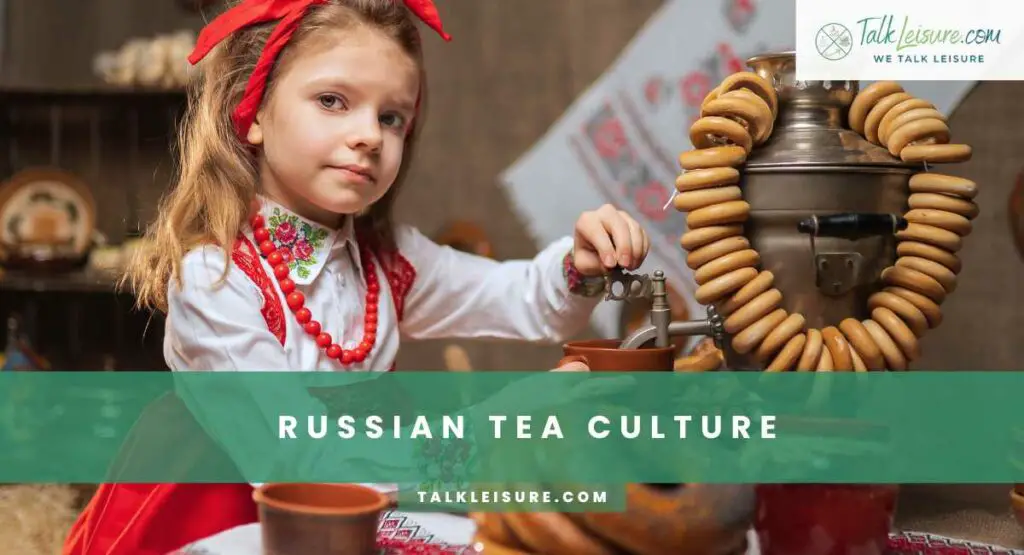
Ah, Russia, where tea isn’t just a drink; it’s a cornerstone of hospitality and a symbol of camaraderie. The roots of Russian tea culture run deep, intertwining with the very essence of daily life.
The Tsar’s Cup: Origins of Russian Tea
Picture the sprawling landscapes of Russia, where vast estates and cozy dachas dot the countryside. It was here, in the 17th century, that tea first made its grand entrance, a precious gift from China to the Russian Tsar. From that moment on, tea took root in the hearts of the Russian people, forever altering the course of their culinary history.
Samovar: The Heart of Russian Tea Rituals
Now, let’s talk about the star of the show: the samovar. This majestic, ornate urn isn’t just a vessel for boiling water; it’s a cultural icon. The samovar sits at the heart of every Russian tea gathering, emitting a warm glow that beckons friends and family to gather ’round.
Three Sips Tradition: Sharing Stories over Tea
In Russia, tea isn’t rushed. It’s savored, sip by sip. The “three sips” tradition is a time-honored ritual. The first sip is said to be for pleasure, the second for conversation, and the third for reflection. It’s a dance of flavors and words that weaves connections and creates memories.
Russian Tea Varieties: Beyond the Basics
While the classic black teas are beloved, Russia boasts its unique varieties. From the robust and malty Russian Caravan to the smoky notes of Lapsang Souchong, each cup offers a taste of history and tradition.
From Samovar Gatherings to Tranquil Tea Houses
In Russia, tea isn’t confined to the home. It spills into quaint tea houses, where locals and travelers alike gather to savor the brew. Samovar gatherings are a cherished tradition where friends share laughter and stories, pausing only to refill their cups.
A Toast to Russian Tea Culture
So, my fellow tea adventurer, as we bid farewell to Russia, let’s raise our cups to a culture that knows the true art of tea. It’s a journey that’s taken us from the opulent halls of Tsars to the cozy corners of Russian homes.
Next stop, Turkey, where tea gardens and the melody of clinking glasses await us. Get ready for a Turkish tea experience like no other!
Also read: The magic of the Moroccan mint tea tradition.
Turkish Tea Culture

Ah, welcome to the vibrant world of Turkish tea culture, where every cup tells a tale of tradition, community, and the joy of simple pleasures. Step into the bustling tea gardens of Turkey, where the art of tea-making is elevated to a social affair.
From Silk Roads to Tea Gardens: The Journey of Turkish Tea
Picture the ancient Silk Roads, where traders and travelers exchanged goods, stories, and, of course, tea leaves. It was on these historical routes that tea first made its way into the heart of Turkish culture. Today, the legacy lives on, as Turkey proudly stands as one of the largest tea-consuming nations in the world.
The Art of Tea Presentation: Çaycı and Semaver
In Turkey, tea isn’t just about the brew; it’s about the presentation. Enter the “çaycı,” the skilled tea server who crafts and serves tea with a graceful flair. The “semaver,” a double-decked tea kettle, takes center stage, gently simmering the leaves to perfection.
Tea and Talk: The Rhythms of Turkish Tea Culture
In Turkish culture, tea is more than a beverage; it’s a bridge that connects hearts and sparks conversations. Whether you’re in a bustling bazaar or a quiet neighborhood, the melody of clinking glasses and animated chatter is a constant soundtrack.
Tulip-Shaped Glasses: A Symbol of Hospitality
Sipping tea from tulip-shaped glasses isn’t just a matter of aesthetics; it’s a gesture of warmth and welcome. The delicate design allows the tea to cool slightly, ensuring each sip is a pleasure, not a scald.
Varieties of Turkish Tea: Black, Green, and More
While black tea reigns supreme in Turkey, green tea also has its place in the hearts of many. Beyond the classics, some unique blends and infusions offer a taste of Turkey’s diverse landscape.
Tea Gardens: Where Community Thrives
Turkish tea gardens, or “çay bahçesi,” are the beating heart of social life. Picture lush green spaces, shaded by tall trees, where friends and strangers come together to share stories and laughter over countless cups of tea.
A Tribute to Turkish Tea Culture
As we bid farewell to the lively tea gardens of Turkey, let’s carry with us the spirit of camaraderie and the art of presentation. Our journey now takes us to the Middle East, where fragrant blends and centuries-old rituals await our exploration.
Middle Eastern Tea Culture

Welcome to the captivating world of Middle Eastern tea culture, where fragrant blends and time-honored rituals create an aromatic tapestry of tradition and hospitality. Join us as we embark on a sensory journey through the bazaars and gatherings of this vibrant region.
A Tapestry of Tradition: Tea in the Middle East
In the heart of the Middle East, tea isn’t just a beverage; it’s a cornerstone of social life. Its roots run deep, entwining with centuries-old customs and weaving its way into daily routines. From grand gatherings to quiet moments of reflection, tea is ever-present.
From Oasis to Teapot: The Journey of Middle Eastern Tea
Imagine the ancient oases of the desert, where weary travelers sought solace and sustenance. It was here that the Middle East first encountered tea, a gift from distant lands. From these humble beginnings, tea became an integral part of the region’s culinary and cultural tapestry.
The Ritual of Hospitality: Serving Tea in the Middle East
In the Middle East, serving tea is an art form, an expression of hospitality that transcends language. The aroma of freshly brewed leaves mingles with the warm embrace of welcoming hosts, creating an atmosphere of comfort and connection.
Tea Blends and Infusions: A Fragrant Symphony
From the bold flavors of traditional black teas to the aromatic dance of herbal infusions, the Middle East offers a diverse array of tea blends. Imagine sipping on a cup of soothing mint tea, or perhaps indulging in the exquisite flavors of rose or cardamom-infused brews.
Ceremonies and Gatherings: Where Tea Comes to Life
In the Middle East, tea ceremonies are a testament to the region’s rich cultural heritage. Picture ornate trays laden with teapots, delicate cups, and sweet treats, all carefully arranged to create a sensory feast for guests.
Tea and the Culinary Arts: Infusing Flavor into Cuisine
Tea isn’t limited to the cup in the Middle East; it finds its way into a myriad of culinary delights. From savory rice dishes infused with saffron and tea, to delicate pastries flavored with rose and pistachio, the influence of tea on Middle Eastern cuisine is unmistakable.
A Toast to Middle Eastern Tea Culture
As we bid adieu to the aromatic bazaars and gracious hosts of the Middle East, let’s carry with us the essence of hospitality and the art of tea blending. Our journey now takes us back home, where we’ll reflect on the tapestry of global tea culture we’ve had the privilege to explore.
Tea Ceremonies and Rituals

Welcome to the heart of our exploration—the enchanting world of tea ceremonies and rituals. In each of the cultures we’ve delved into – Russia, Turkey, and the Middle East – tea isn’t just a drink; it’s a ceremony, a celebration, and a cherished tradition.
Russian Tea Ceremony: A Symphony of Samovars and Sips
In Russia, tea is steeped in ceremony. The focal point? The grand samovar, a gleaming work of art that graces every gathering. It’s not just a vessel for boiling water; it’s a centerpiece, a source of warmth, and a symbol of hospitality. The act of brewing and serving tea from a samovar is an art form in itself, a performance that sets the stage for conversation and camaraderie.
Turkish Tea Ceremony: The Dance of Çaycıs and Semavers
In Turkey, tea-making is an elegant ballet, orchestrated by skilled tea servers known as “çaycıs.” They wield the “semaver” with grace, pouring tea with a flourish that’s as much about presentation as it is about taste. The process is a choreography of water, leaves, and heat, resulting in the perfect cup of Turkish tea.
Middle Eastern Tea Ceremonies: A Sensory Extravaganza
The Middle East elevates tea-drinking to an art form, where every element – from the intricate tea sets to the choice of blends – is a deliberate choice. The ceremonies are a sensory journey, an experience that engages sight, scent, and taste. Each step, from the selection of tea to the pouring and serving, is steeped in tradition and executed with grace.
Shared Moments, Lasting Memories: The Essence of Tea Ceremonies
In all three cultures, the act of sharing tea transcends the physical act of drinking. It’s a moment of pause, an opportunity to connect with loved ones, to forge friendships, and to honor guests. Whether it’s the Russian three sips tradition, the lively chatter of a Turkish tea garden, or the fragrant gatherings of the Middle East, tea ceremonies create lasting memories.
Beyond Borders: The Universal Language of Tea
As we’ve journeyed through the tea cultures of Russia, Turkey, and the Middle East, one thing becomes abundantly clear: tea is more than a beverage. It’s a universal language that transcends borders and languages. It’s a gesture of warmth, a symbol of hospitality, and a thread that weaves together the diverse tapestry of human experience.
Tea Houses and Social Gatherings

Welcome to the charming world of tea houses and the lively gatherings that revolve around the shared love for tea. In each of the cultures we’ve explored – Russia, Turkey, and the Middle East – tea isn’t just a drink; it’s a social affair, a gathering of souls, and a celebration of camaraderie.
Samovar Gatherings in Russia: Where Hearts Warm as Tea Flows
In Russia, the samovar takes center stage in gatherings. Picture a room adorned with ornate trays, cups, and of course, the grand samovar, radiating a comforting warmth. Friends and family huddle together, replenishing their cups with the golden elixir, their laughter, and stories intermingling with the steam rising from their tea.
Turkish Tea Gardens: Where the Breeze Carries Laughter and Aromas
In Turkey, tea gardens, or “çay bahçesi,” are like an oasis amid bustling cities. Lush green spaces, shaded by tall trees, where friends and strangers alike gather. The air is alive with the clinking of glasses, the hum of conversations, and the aromatic melodies of brewing tea. It’s a haven for socializing, a place where moments turn into memories.
Traditional Tea Houses in the Middle East: Where History and Hospitality Collide
In the Middle East, tea houses are more than places to sip tea; they’re cultural sanctuaries. Imagine stepping into a centuries-old establishment, where the walls whisper tales of times long past. Here, locals and travelers converge, drawn by the promise of fragrant blends and the warmth of companionship.
Tea Houses: Beyond Brick and Mortar, a Sense of Belonging
In each of these cultures, tea houses are more than physical spaces; they’re sanctuaries of community. They’re where strangers become friends, where stories are shared, and where the simple act of pouring tea becomes a gesture of welcome.
A Tribute to Tea Houses and Gatherings
As we bid adieu to the cozy corners of Russian homes, the bustling Turkish tea gardens, and the historical tea houses of the Middle East, let’s carry with us the spirit of togetherness. Our journey now leads us to explore the unique tea varieties that each of these cultures has to offer.
Regional Tea Varieties
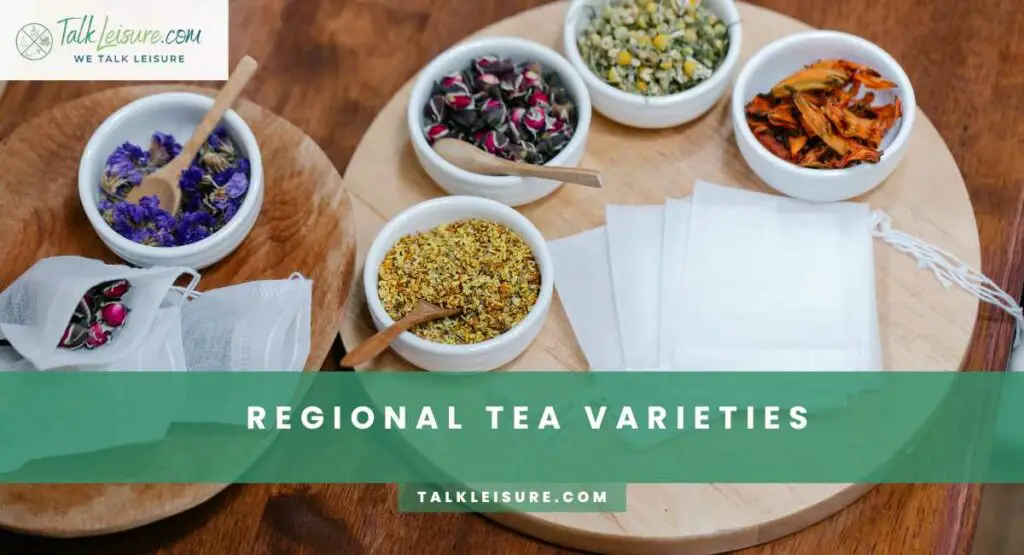
Welcome to the diverse world of regional tea varieties, where each culture imparts its own unique flavor and character to this beloved beverage. In Russia, Turkey, and the Middle East, tea isn’t just a drink; it’s an expression of heritage and a testament to the richness of local landscapes.
Notable Russian Tea Varieties and Blends
In Russia, tea preferences span a wide spectrum. From the robust and malty Russian Caravan, a blend of black teas with a hint of smokiness, to the comforting Uzvar, a fruit-infused brew that warms the soul, each cup is a journey through Russian tradition and terroir.
Popular Turkish Tea Types: From Rize to Apple Tea
Turkey boasts a love affair with tea that spans generations. The jewel in the Turkish tea crown is undoubtedly Rize tea, a black tea grown along the lush hillsides of Rize province, known for its bright color and robust flavor. And let’s not forget the sweet and fruity delight of apple tea, a beloved choice for both young and old.
Distinctive Middle Eastern Tea Blends: Spices, Herbs, and Tradition
In the Middle East, tea isn’t just about leaves; it’s about infusing a rich tapestry of flavors. Picture sipping on a cup of soothing mint tea, fragrant with the essence of fresh leaves, or indulging in a blend of warm spices like cardamom, cloves, and cinnamon. Each sip is a sensory experience, a taste of the region’s storied culinary heritage.
A Symphony of Flavors: Celebrating Tea Diversity
As we’ve traversed the cultures of Russia, Turkey, and the Middle East, one thing is abundantly clear: the world of tea is as diverse as the landscapes that give birth to it. From the bold and robust to the fragrant and spiced, each cup offers a glimpse into the soul of its culture.
A Toast to Diversity
As we bid farewell to the varied tea varieties that have graced our cups, let’s carry with us the knowledge that every sip is a tribute to the rich tapestry of human creativity and tradition. Our journey now leads us to explore the culinary uses of tea in these vibrant cultures.
Culinary Uses of Tea

Welcome to the culinary journey where tea transcends the cup and finds its way into a delightful array of dishes. In Russia, Turkey, and the Middle East, tea isn’t just for sipping; it’s an ingredient that infuses flavor, aroma, and a touch of tradition into the cuisine.
Tea in Russian Cuisine: Infusing History into Every Dish
In Russia, tea isn’t limited to the samovar; it finds its way into a myriad of culinary delights. Imagine indulging in “Pirozhki,” delicate pastries filled with a flavorful blend of tea-infused ingredients, or savoring a bowl of “Kompot,” a refreshing fruit beverage steeped in the spirit of tea traditions. Tea in Russian cuisine is a testament to the creativity and resourcefulness of its people.
Turkish Delights: Tea-Infused Flavors in Every Bite
Turkey, too, embraces the art of infusing tea into its culinary repertoire. From “Çay Aşı,” a hearty soup infused with the essence of tea leaves, to “Rize Pilaf,” a fragrant rice dish cooked with the rich flavors of Rize tea, the influence of tea on Turkish cuisine is unmist. It’s a culinary tradition that marries the boldness of tea with the subtleties of flavor.
Middle Eastern Fusion: Tea, Spices, and Culinary Alchemy
In the Middle East, tea leaves play a starring role in the culinary theater. Picture dishes like “Chelo,” a fragrant Persian rice dish subtly infused with tea, or “Maamoul,” delicate pastries featuring a medley of tea-infused fillings. It’s a fusion of fragrances, a symphony of flavors, and a testament to the versatility of tea in the kitchen.
Beyond the Cup: Tea as a Culinary Muse
As we’ve explored the culinary landscape of Russia, Turkey, and the Middle East, one thing is clear: tea is more than a beverage; it’s a muse for culinary creativity. It’s a thread that weaves through centuries of tradition, infusing every dish with a touch of heritage.
A Toast to Culinary Innovation
As we bid adieu to the tea-infused delights that have graced our plates, let’s carry with us the knowledge that the culinary world is as boundless as our imagination. Our journey now takes us to the heart of daily tea-drinking routines in these vibrant cultures.
Conclusion: Celebrating Tea Diversity
Congratulations, dear reader! You’ve journeyed through the vibrant tea cultures of Russia, Turkey, and the Middle East, and I hope you’ve found it as enriching and delightful as I have. Together, we’ve explored the centuries-old traditions, the artful ceremonies, and the myriad ways in which tea has woven itself into the tapestry of daily life.
A Tapestry of Connections
As we reflect on this journey, one thing becomes abundantly clear: tea is a universal language that transcends borders and languages. It’s a gesture of warmth, a symbol of hospitality, and a thread that weaves together the diverse tapestry of human experience. Whether sipped from a samovar in Russia, shared in a Turkish tea garden, or savored in a Middle Eastern tea house, the essence remains the same – tea brings people together.
The Legacy of Tradition
The tea cultures we’ve explored aren’t just about the beverage itself; they’re about the traditions, the rituals, and the stories that accompany each cup. From the grandeur of Russian samovar gatherings to the lively clinking of glasses in Turkish tea gardens, every experience is steeped in history and held dear by those who partake.
A Call to Embrace Diversity
Through this exploration, we’ve learned that there’s no one way to enjoy tea. Each culture brings its own flair, its own unique blend of flavors and customs. It’s a reminder that diversity is not just something to be celebrated; it’s something to be embraced, for it enriches our lives in ways we may not even realize.
The Next Cup Awaits
As our journey through the unique tea cultures of Russia, Turkey, and the Middle East draws to a close, remember that the beauty of tea is that it’s an ever-evolving adventure. There are countless more cultures, traditions, and flavors waiting to be discovered. So, why not embark on your own tea exploration? Who knows what delightful surprises await in that next cup?
Cheers to Tea, Cheers to You
Thank you for embarking on this tea-filled adventure with me. May your future cups be brimming with warmth, flavor, and the spirit of camaraderie that tea so beautifully embodies. Until our next tea-filled rendezvous, may your days be steeped in joy!
Frequently Asked Questions
- What is unique about Turkish tea?
Turkish tea stands out for its robust flavor, prepared in a two-tiered pot called “çaydanlık.” Served in tulip-shaped glasses, it’s a symbol of Turkish hospitality. Tea gardens, or “çay bahçesi,” are pivotal for socializing. Skilled servers, “çaycı,” add an elegant touch. It’s an integral part of daily life, sweetened with sugar cubes, and holds deep cultural significance, fostering unity and cherished moments.
- What is the famous tea in Russia?
The famous tea in Russia is known as “Russian Caravan” tea. This blend of black teas is characterized by its robust, smoky flavor. It earned its name from the historic caravan routes that brought tea from China to Russia. Russian Caravan tea holds a special place in Russian tea culture and is enjoyed for its unique taste and rich history.
- What kind of tea is popular in the Middle East?
In the Middle East, one of the most popular types of tea is “Mint Tea” or “Nana Tea.” This fragrant infusion is made by steeping green tea leaves with fresh mint leaves and often sweetened with sugar. It’s known for its refreshing taste and is a staple in Middle Eastern hospitality, commonly served to guests as a gesture of warmth and welcome.








